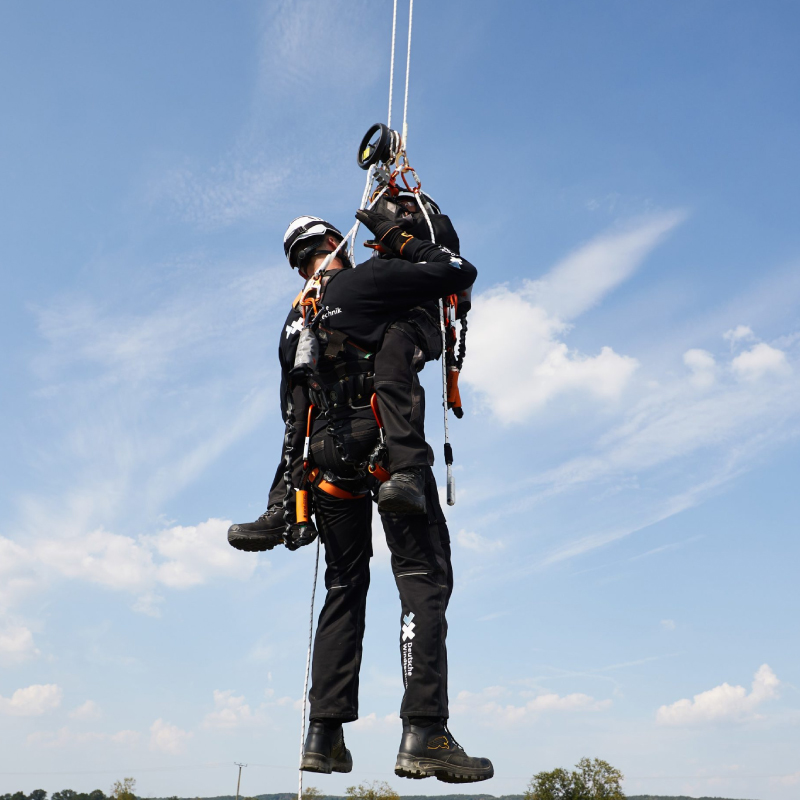Fall Protection Rescue

Fall Protection Rescue en
13/12/2022
THE updated standard for fall protection, ANSI Z359, will contain two important guidelines for rescue. A portion designated Z359.0 will provide facility managers a plan to build and maintain rescue operations, while Z359.3 is a new standard dedicated to the construction, use, and training required for fall protection rescue equipment.
Many facilities that are required to use fall protection pay minimal attention to the need for rescue from a fall, even though it is a clear OSHA requirement. The new ANSI standards recognize that an arrested fall is the first rescue that has taken place--the worker was prevented from impacting structures below him or the ground. However, most users of fall protection equipment fail to adequately plan further than this first life/injury saving step.
Case studies have revealed that time and time again, the saved worker may well remain suspended by his equipment for an inordinate amount of time while co-workers are left to scramble to figure out what to do next. This author is familiar with a situation in which the suspended worker dangled in the direct path of a venting steam line for over 20 minutes! As dangerous as the potential fall path may be, there is increasing evidence of the dangers of suspension injuries and deaths caused by hanging inanimate in a harness for even a relatively short period of time. It is for these and other reasons that the ANSI fall protection standards committee addressed the critical issue of rescue.
It is important to point out that the standard is not written for professional rescuers such as fire, police, and ambulance personnel. Rather, the standards were developed for industrial equipment users as well as manufacturers. While rope rescue utilized by professionals may be an ultimate call after other rescue means are considered and/or tried and rejected, these standards are written for equipment users as planned rescues. The emphasis is placed on planning for emergencies as part of the overall fall protection program.
The hierarchy of fall protection rescue is simple: self-rescue by the worker who has fallen, assisted rescue by co-workers, and, if all else fails, calling in professional rescuers. A couple of notes: A facility should call for the professionals as soon as a worker takes a fall. Remember that the pros can always be turned around if our fallen worker is otherwise rescued. And assisted rescue by co-workers could consist of any of many means of assistance, from leaning out to hand a fallen worker a piece of rescue equipment or cranking the worker up or down to safety, even to using an on-site rescue squad utilizing professional rope rescue techniques (again, these techniques are not yet covered by these standards).
Highlights from Z359.3
A very small taste of rescue-related highlights from Z359.3:
A competent fall protection rescue trainer is defined as somebody with the necessary education, knowledge, and experience who can safely and effectively teach others. The trainer is expected to have the skills to teach and to include hands-on rescue training.
A fall protection rescue plan has to be prepared by a competent person before any work can proceed.
The rescue plan shall consider using secondary back-up safety lines for the rescue subject during a rescue operation.
Emergency response personnel should be trained to recognize and respond to the risks of suspension trauma.
The bottom line is that facility managers are going to have to take a close look at their fall protection program to consider how to plan to respond to emergencies--that exercise will save workers' lives!
Source: OH&S



